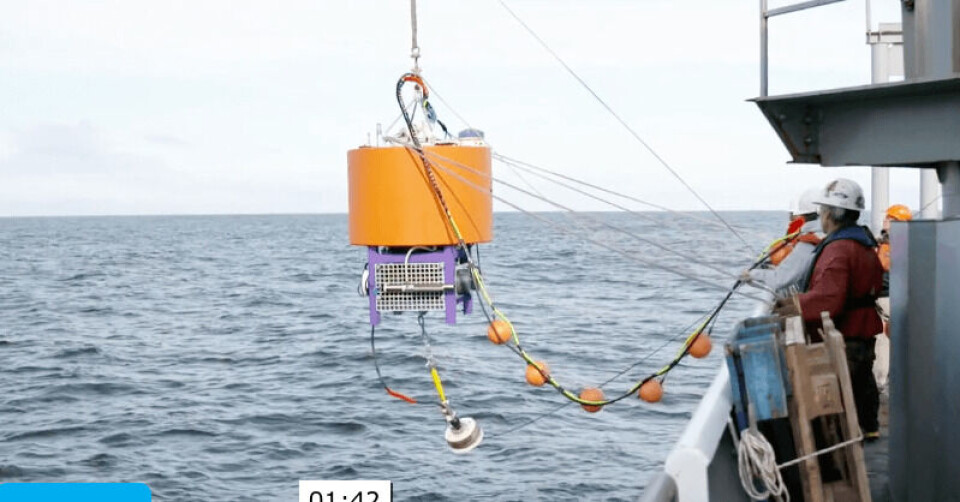
Keeping algae at arm's length
The North American salmon farming industry is set to benefit from automated equipment installed by NOAA off the Washington Coast which will track concentrations of six species of plankton.
Developed by the Monterey Bay Aquarium Research Institute, the Environmental Sample Processor (ESP) collects discrete samples of water and processes them for analysis. Imbedded modules can test for DNA and antibodies to identify the organisms picked up in the seawater. Concentrations of plankton and their toxins present in the water are sent to shore-based researchers via satellite.
The ESP was deployed in the Juan de Fuca eddy, a known pathway for toxic algae 13 miles off the Washington Coast near LaPush. The remote, self-operating laboratory will operate about 50 feet underwater.
One of the primary targets of the monitoring is Pseudo-nitzschia, a harmful algae capable of producing domoic acid. This toxin can accumulate in shellfish and can cause diarrhetic shellfish poisoning, which can progress to severe illness. Last year, a massive bloom of this toxic algae cancelled scheduled razor clam seasons on Washington beaches with untold economic consequences.
Domoic acid is also extremely harmful to salmon, and the large bloom off the coast of BC last summer caused many issues for salmon farmers in the area, resulting in decreased food intake and slower growth rates as the fish were stressed.
The bloom affected the entire West Coast, from California to Alaska. It was the largest and longest-lasting bloom in at least 15 years, according to NOAA’s National Ocean Service.
“Concentrations of domoic acid in seawater, some forage fish and crab samples were among the highest ever reported in this region,” says a factsheet from NOAA. “By mid-May, domoic acid concentrations in Monterey Bay, California, were 10 to 30 times the level that would be considered high for a normal Pseudo-nitzschia bloom.”
“Other HAB toxins were also detected on the West Coast. Shellfish closures in Puget Sound protected consumers from paralytic shellfish poisoning and diarrhetic shellfish poisoning.”
Paralytic shellfish poisoning is associated with a group of plankton called Alexandrium, typically Alexandrium catenella in the Puget Sound region.
However, in addition to sampling for Alexandrium and four species of Pseudo-nitzchia,the ESP is monitoring for Heterosigma akashiwo, which is associated with massive fish kills, including farmed salmon.
Early warning of toxic algal blooms can assist state/provincial and local health officials in their surveillance of toxic shellfish. But, for salmon farmers, this early warning system will enable them to make husbandry decisions such as reducing feed, setting up tarps around the farms, or even (in extreme cases), moving fish.




















































